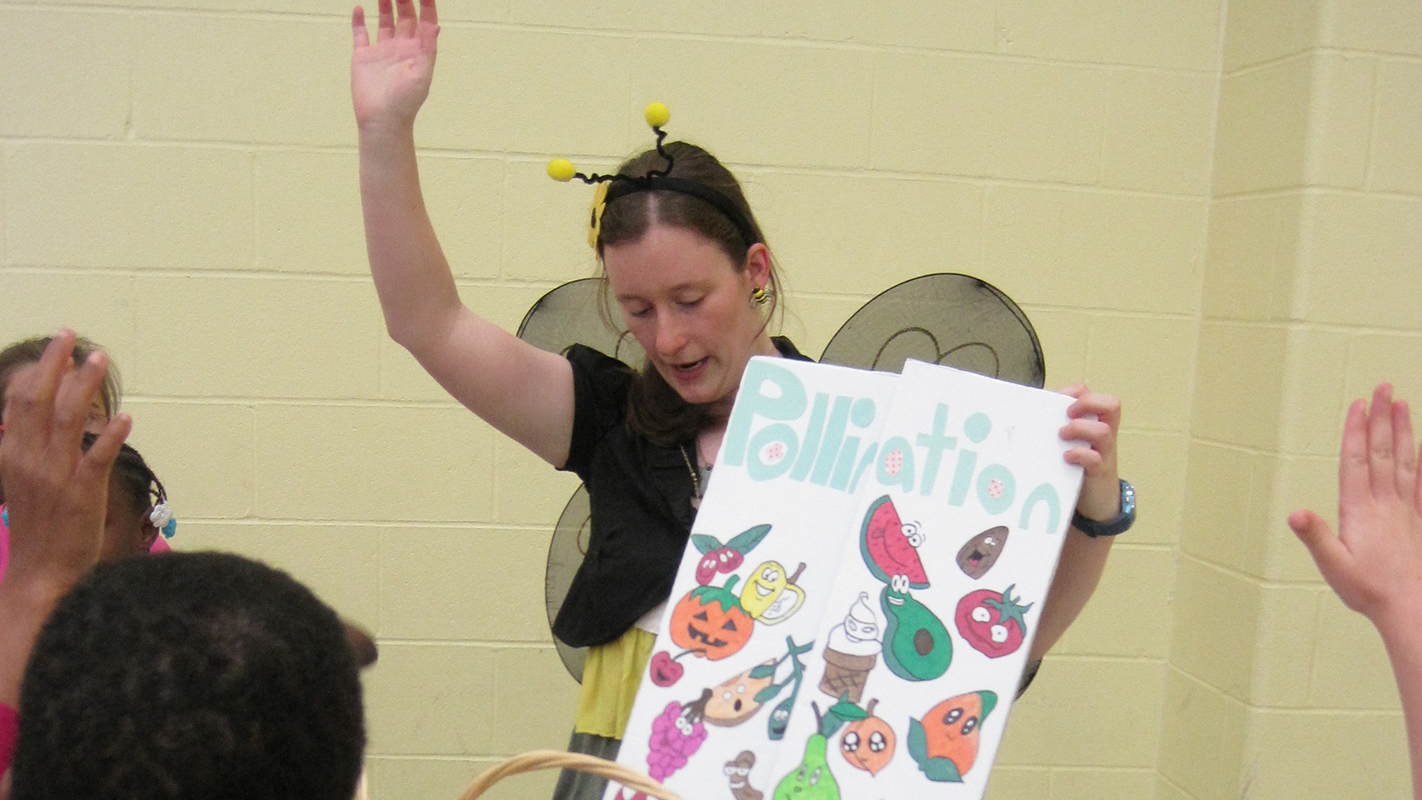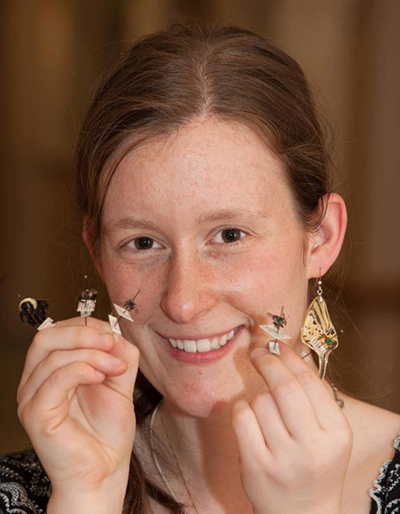This Is What Science Looks Like at NC State: April Hamblin

Editor’s Note: This post was written by April Hamblin, an entomology graduate student at NC State. The post is an entry in an ongoing series that we hope will highlight the diversity of researchers in science, technology, engineering and mathematics. The series is inspired by the This Is What A Scientist Looks Like site.
On Thanksgiving, I like to thank bees for their pollination services. Have you ever thought about what actually happened to the food in front of you before it was food?

If you love pumpkin pie, you may want to thank the Squash Bee (Peponapis pruinosa) for pollinating squash. If you are more of a blueberry cobbler kind of person, you should thank the Southeastern Blueberry Bee (Habropoda laboriosa). And, if you just adore apple strudel, you would want to applaud the Blue Orchard Bee (Osmia lignaria) for all her hard work. While Honey Bees (Apis mellifera) are the most common bee managed for agriculture, native bees must also be commended for their work, especially in urban areas like your backyard.
As a graduate student at NC State in Dr. Steven Frank’s lab, I study these native bees in urban areas like the city of Raleigh. I am trying to understand how temperature influences the native bee population. Cities and other urban areas have hotter temperatures than the natural surrounding areas around them. This is called the urban heat island effect.
As a scientist, I ask questions. How do individual bees of different species respond to temperature changes? How do other factors of the urban environment (like the number of flowers or the amount of cement) influence native bees? I use research as a tool to answer these questions.
So far, I have collected 85 species of bee from the city of Raleigh. While that may sound like a lot, there are over 500 species of native bees in North Carolina! I just started my second field season collecting bees, so will hopefully be able to answer the questions above with more information.
If you are interested in learning more about how to help the native bees in your back yard, I am hosting a Pollinator Garden Workshop with my friends and post-docs of my lab, Dr. Elsa Youngsteadt and Dr. Margarita López-Uribe.
You may be thinking, what in the world would lead someone to study insects? Let me tell you.
When I was a kid I spend most of my time reading fiction. I loved thinking about fantasy worlds and imaginary creatures. I read so many books, my mom literally had to force me to go outside. This seems odd because most entomologists and ecologists I know always talk about frolicking outside as kids, but that was not the case for me.
Although books were my go to, once I explored the world outside, I found a fantasy world of my own full of plants, animals, and insects. After falling in love with the natural environment, I studied environmental sciences as an undergraduate. I wanted to stand up for the animals that people did not like or did not understand, which led me to insects. I soon realized I wanted to study an insect I could stand up for; this led me to study the amazing native bees.
Although I spend most of my time researching native bees, I also find time for myself. I love teaching anyone who will listen about native bees and other aspects of science. I also love learning new topics, reading the Bible, dancing to good music, and washing dishes.
- Categories:


